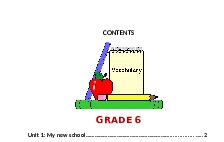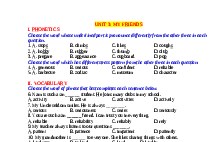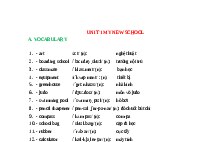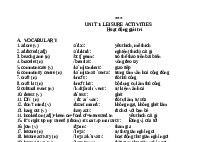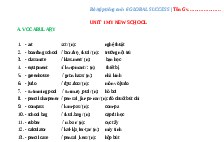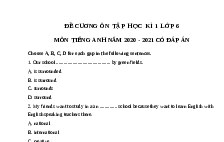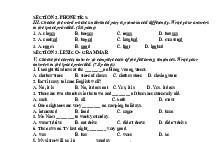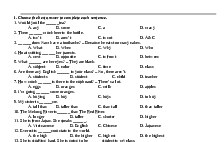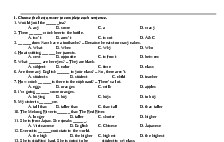Math Puzzles and Brainteasers Grades 6-8
Nội dung tài liệu
Tải xuốngCác tài liệu liên quan
-
![Từ vựng và bài tập Tiếng Anh 6 Unit 1]()
-
![Bài tập trắc nghiệm Unit 3 Tiếng anh 6]()
-
![Bài tập Global Succes Tiếng Anh 6]()
-
![Từ vựng và ngữ pháp bài tập theo Unit Tiếng Anh 6]()
-
![Bài tập Tiếng Anh 6 GLOBAL SUCCESS học kì 1]()
-
![Kiến thức trọng tâm và bài tập vận dụng nắm chắc kiến thức Unit 1 Tiếng Anh 6]()
-
![Đề cương ôn tập tiếng Anh lớp 6 học kì 1 có đáp án]()
-
![Đề luyện thi học kì tiếng anh lớp 6 năm 2020-2021]()
-
![Đề luyện thi học kì tiếng anh 6]()
-
![Ôn tập kiểm tra cuối kì 1 tiếng anh lớp 6]()
Có thể bạn quan tâm
Thông tin tài liệu
ftoc.indd 67/13/09 5:11:02 PMPraise for Math Puzzles and BrainteasersTerry Stickels combines his masterful ability to create diverse, challenging and just plain fun puzzles with wide range of math concepts, in playful way that encourages the solver to discover their own unique methods of finding solutions.—David Kalvitis, author of The Greatest Dot-to-Dot Books in the World Logical, numerical, visual-spatial, and creative thinking problems can all be found within these covers, embracing wide spectrum of thinking skills for developing minds. Terry Stickels also encourages indulgence in mathematical play, which for young students is an indispensable component of motivated and successful problem solving. —Barry R. Clarke, Mind Gym compiler, The Daily Telegraph (UK)Even kids who are not math nerds will enjoy this book. Stickels hits the perfect mix of brainteasers: They’re challenging while still managing to be great fun at the same time! —Casey Shaw, Creative Director, USA WEEKEND magazineTerry Stickels is clearly this country’s Puzzle Laureate. He has concocted delightful and challenging volume of brainteasers that belong in every math teacher’s library. Focused specifically on grades 3–5 and grades 6–8, these puzzles both educate and sharpen children’s critical thinking skills. As an award-winning puzzle constructor myself, am always in awe of what Terry comes up with. —Sam Bellotto Jr., Crossdownffirs.indd 17/9/09 12:06:47 PMJossey -Bass TeacherJossey-Bass Teacher provides educators with practical knowledge and tools to create positive and lifelong impact on student learning. We offer classroom-tested and research-based teaching resources for variety of grade levels and subject areas. Whether you are an aspiring, new, or veteran teacher, we want to help you make every teaching day your best. From ready-to-use classroom activities to the latest teaching framework, our value-packed books provide insightful, practical, and comprehensive materials on the topics that matter most to K–12 teachers. We hope to become your trusted source for the best ideas from the most experienced and respected experts in the field.ffirs.indd 27/9/09 12:06:47 PMMaTh Puzzles and BrainTeasers, grades 6–8Over 300 Puzzles that Teach Math and Problem-Solving SkillsTerry Stickelsffirs.indd 37/9/09 12:06:47 PMPublished by Jossey-BassA Wiley Imprint989 Market Street, San Francisco, CA 94103-1741—www.josseybass.comNo part of this publication may be reproduced, stored in retrieval system, or transmitted in any form or by any means, electronic, mechanical, photocopying, recording, scanning, or otherwise, except as permitted under Section 107 or 108 of the 1976 United States Copyright Act, without either the prior written permission of the publisher, or authorization through payment of the appropriate per-copy fee to the Copyright Clearance Center, Inc., 222 Rosewood Drive, Danvers, MA 01923, 978-750-8400, fax 978-646-8600, or on the Web at www.copyright.com. Requests to the publisher for permission should be addressed to the Permissions Department, John Wiley Sons, Inc., 111 River Street, Hoboken, NJ 07030, 201-748-6011, fax 201-748-6008, or online at www.wiley.com/go/permissions.Permission is given for individual classroom teachers to reproduce the pages and illustrations for classroom use. Reproduction of these materials for an entire school system is strictly forbidden.Readers should be aware that Internet Web sites offered as citations and/or sources for further information may have changed or disappeared between the time this was written and when it is read.Limit of Liability/Disclaimer of Warranty: While the publisher and author have used their best efforts in preparing this book, they make no representations or warranties with respect to the accuracy or completeness of the contents of this book and specifically disclaim any implied warranties of merchantability or fitness for particular purpose. No warranty may be created or extended by sales representatives or written sales materials. The advice and strategies contained herein may not be suitable for your situation. You should consult with professional where appropriate. Neither the publisher nor author shall be liable for any loss of profit or any other commercial damages, including but not limited to special, incidental, consequential, or other damages.Jossey-Bass books and products are available through most bookstores. To contact Jossey-Bass directly call our Customer Care Department within the U.S. at 800-956-7739, outside the U.S. at 317-572-3986, or fax 317-572-4002.Jossey-Bass also publishes its books in variety of electronic formats. Some content that appears in print may not be available in electronic books.Printed in the United States of AmericaISBN: 978-0-4702-2720-6f nPB Printing 10 1ffirs.indd 47/9/09 12:06:47 PMContentsForeword viiACkNowLedGMeNTS xiAbouT ThiS book xiiiThe AuThor xviiiNTroduCTioN i. NuMberS and oPerATioNS 5whole Numbers 6rational Numbers 40 ii. GeoMeTr and MeASureMeNT 63Geometry 64Measurement 75iii. MATheMATiCAL reASoNiNG 89Visual 90other 139iV. ALGebrA, STATiSTiCS, and ProbAbiLiTY 153ANSwerS 173ftoc.indd 57/13/09 5:11:02 PMftoc.indd 67/13/09 5:11:02 PMviiForeword In the 1950s we punished misbehaving students in middle school or junior high school by making them stay after school to do 100 multiplication or long-division math problems. Mathematics was taught in highly ordered and mechanically repetitive manner with the objective being to master basic arithmetic skills. decade later New Math emerged as response to the Soviet Union’s early dominance in the race to outer space. The focus in the classroom shifted from drill to conceptual understanding to prepare students for early exposure to advanced mathematics. This theoretical approach failed miserably because middle school students entering high school did not possess the arithmetic skills necessary to do calculations in mathematics and science courses. Consequently, the 1970s saw backlash and the Back-to-the-Basics movement emerged. During the last three decades we have witnessed the emergence of several more movements in mathematics education attempting to balance the mastery of computational skills and conceptual understanding. These movements included problem-solving approach, high-tech calculator/computer approach, and mathematical user-friendly approach. Why have all these movements fallen short? The number-one complaint about mathematics from students is: Math is boring! Perhaps, in the 21st century there should be Math for Fun movement that makes mathematics exciting, challenging, and rewarding. With this puzzle book, Terry Stickels flast.indd 77/9/09 12:06:05 PMhas pioneered an innovative approach to motivating students not only to learn and do mathematics but also to come away from the experience with positive attitude. In this creative and stimulating book, students and teachers will find potpourri of mind-expanding puzzles designed to enhance and enlighten, as well as to entertain. This book contains an incredible assortment of puzzles of various types including logical, geometrical, mathematical, and verbal. The diversity of the puzzles and the various approaches to solving them will improve the student’s problem-solving skills, as well as the general thinking skills required for subjects outside of mathematics. Using these puzzles as supplements to the traditional mathematics curriculum, the teacher can add new dimension to students’ learning experience. For example, the puzzles can be used to introduce and motivate fundamental algebraic or geometrical concepts. The puzzles also can be used to apply these abstract concepts to concrete problems. Thus, these puzzles can supplement the traditional “story problems” that have been tormenting students for decades. In addition, the puzzles can be used to give bonus points or extra credit to students who finish their required daily assignments in timely manner. An exciting and promising application of the puzzles would be in math club where the students can compete and play games that challenge the mind and the creative spirit. Teaching and learning mathematics constitute multidimensional experience. The first dimension consists of the rules and algorithms required to do calculations. Many students perceive mathematics as being one-dimensional—“number crunching.” To apply the potential power of mathematics effectively, however, they need second dimension: conceptual understanding and framework. To expand the potential power of mathematics, they must enter third dimension: the intuitive and mind-expanding creative viii Forewordflast.indd 87/9/09 12:06:05 PM


